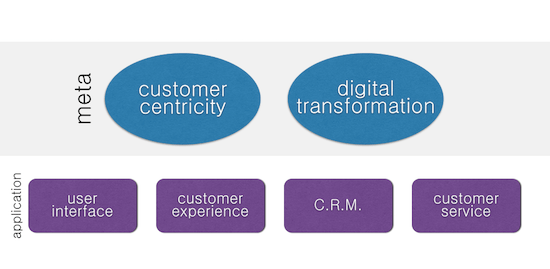The year 2015 is now well under way. It is my strong suspicion that many of those carefully worked-on budgets that marketing teams crafted at year-end are already starting to feel a strain. And I have to believe that a flawed online and digital marketing strategy is often times to blame.
To take some of the most likely issues: Facebook reach and engagement continue to dwindle; prices at Google and Facebook continue to rise; agency propositions to create “great content” are requiring more and more resources; website upgrades are becoming evermore frequent; bandwidth and data storage needs are busting at the seams…
As marketing budget allocations for digital are no longer anecdotal for most big brands, the questions on executive minds are inevitably: which are the most effective digital strategies and where is the biggest bang for the buck?
Digital strategy
As much as I wish that the word “digital” would vanish to just have “strategy” or “marketing,” reality is that we must still talk about the digital strategy. So, what are the key themes and trends for brands in 2015? I think that, while there are bound to be new digital tools (Instapult, Whichit), devices (i.e. Apple Watch) and platforms (maybe Ello…), we are entering more of an era of relative maturation or consolidation, where it is more about improvement and optimisation than discovery and experimentation. {Tweet this, if you agree!} I see the digital trends at three levels:
- The “meta” level that speaks to the organization.
- The applications of customer centricity and digital transformation.
- The marketing levers.

Digital transformation and customer centricity
Just as companies are coming to grips with the digital transformation agenda, there is an equal realization of the importance of customer centricity. Somehow, they are intricately related. {Tweet this!} Digital transformation is necessary because the customer is behaving differently. A digital transformation program without customer centricity is something of a three-legged horse.
Application
The way that customer centricity through digital is expressed can be broadly grouped into four key categories:
- User interface (i.e. on the digital tools and platforms).
- Customer experience (the broader “omnichannel” journey).
- CRM – and the quest for a more personalized and personal interaction.
- Customer service – enhancing the experience beyond the product itself.
As such, one of the big question marks for brands will be: which business tools (and partners) to use to help manage, unite and quantify? {Tweet this!}
The top trends
As the list below attests, there is nothing new to announce. Most of these 10 items were on the list last year; others have been “on the list” even for a while. What is new is how the focus is shifting and what “great” looks like within the space.{Tweet this!} Moreover, in many cases, it will also be about how different levers interplay with one another.
In this post, I wish to qualify how I see brand marketers focusing their energies. [Another side of me would like to discuss what marketers should be doing, but that is the subject of my regular posts!] Rather, I will add what I consider are the salient make-or-break components for each lever.
 Mobile marketing: Working on a mobile first strategy. For retailers, it will be about finding sensible, if not novel, ways to engage with the in-store traffic.
Mobile marketing: Working on a mobile first strategy. For retailers, it will be about finding sensible, if not novel, ways to engage with the in-store traffic.- Social media marketing: Making each platform have a specific and measurable purpose.*
- Content marketing: Not just good content that is relevant, credible and timely, but that has a distribution strategy.{Tweet this!} Thus, paying to play will become de rigueur.
- Wearable technology: Still early days, but how will wearable tech transform customers’ experiences and expectations?
- OOH: An under-exploited area, digital can bring a lot of vibrancy to the OOH communication space (witness this great collection, reported in French).
- Digital in Retail: With more and more pure players opening up IRL stores, the major thrust of “digitail” will be on integrating Commerce and eCommerce to create more utility and make the retail experience more engaging.
- Marketing automation: While different platforms continue to require different semantics, there is no doubt that marketers need to find ways to become more efficient across the different platforms. For the larger organizations, the challenge will be for the CTO and CMO to come to agreement on procurement and integration.
- Cyber security. We have not heard the last of the cyber hacks and security breaches. Top executives will need to take this subject more seriously and, unfortunately, it is not just about finding a software solution. Corporate culture and internal policies will need to be reviewed.
- Digital Talent. The fight for good digital marketers — who are able to handle/manage internal corporate politics and constraints — will be absolutely vital. {Tweet this!} It’s one thing to find and recruit great talent, it’s another to keep them.
- Employee e-Engagement. Digital transformation cannot be the sole responsibility of the digital “guru” or the Chief Digital Evangelist/CDO. Companies will come to understand more acutely the role that employees play in their eReputation. Employees must be the brand’s number one fans.{Tweet this!} Creating internal systems that enable, encourage and reward employee engagement will likely be a key part of the content distribution question above (#3) as well as helping to enhance the social media strategy (#2).
*In a recent poll I conducted of the first four levers in this list, social media marketing was identified as having the most impact on business.
There are the top ten trends I see in business with regard to digital strategy. To what extent do you agree? What would you add or replace?











